Strategiczni.pl is an interactive agency dealing with, among others, SEO, positioning, content marketing and PPC advertising in such channels as Facebook and Google. We apply an individual approach to our clients and treat them as partners. Each project is an interesting challenge for us and we are not afraid to take on new tasks.
At Strategiczni.pl we focus, among other things, on helping IT companies win foreign clients. We do this by using the whole arsenal of methods at our disposal – SEO, PPC advertising and social media.
Senuto is one of the most important tools in our toolbox. We use it on a daily basis in our work to analyze competitors, track client progress, and run keyword research. The tool is slowly becoming an SEO harvester, which we are very happy about.
How to use Senuto to build a content plan for the IT industry
Let’s start with how you can use Senuto to prepare a content plan. Based on the fact that we specialize in the IT industry, we will focus on generating a content strategy for a local software development company that plans to expand into foreign markets. For the purpose of this short tutorial, let’s choose one of the more obvious phrases: software development company.
To prepare a content plan, we will need only two tools:
- Senuto
- Spreadsheet
The challenge
Winning foreign customers is one of the key objectives for local IT companies. And appropriate content supported by outreach activities is one of the best ways to reach potential business partners. The question is how to build content that not only improves visibility but also attracts traffic and ensures conversion?
Senuto gives us a whole set of tools which can be very helpful in the process of preparing a content plan for a client. For the case described above, we will use:
- SERP Analysis
- Keyword Explorer
- Visibility Analysis
The above functionalities are essential in providing us with the data we need to prepare a good content plan.
Let’s go back to our phrase: software development company
Let’s check how the search results for this query look like. For this purpose we will use SERP Analysis.

We already have the first two data – the average monthly number of searches and the CPC cost. Already on their basis we are able to draw initial conclusions.
The high CPC cost confirms our conviction that this is a competitive keyword and the approach based on content marketing and gaining organic traffic with it is the most reasonable.
Before we start the detailed analysis, a few words about content creation
Before we start the analysis, it’s worth discussing how we approach content creation.
In this case, we will base our actions on a properly prepared silos. Silos are nothing more than content grouped in relation to given topics. In this way the information architecture is created, which makes it easier for search engine robots to understand the website. It also introduces more order in the content. This makes it easier to implement the E-A-T model and help the Rank Brain algorithm (based on machine learning) understand our content. A website can have many separate silos, focused on separate topics.

The benefits of using silos are:
- content is built around a given topic, on the basis of a homepage and supporting pages,
- you work on both generic and long tail keywords,
- ability to scale dynamically,
- a clear information architecture,
- maintenance the rule: one URL = one keyword.
One of the basic elements of operating on silos is preparing a list of:
- Primary keywords – the most important and difficult keywords that will require the most effort and resources;
- Secondary keywords – keywords quite closely related to the topic, being an extension of it or a more detailed description of it;
- Supporting keywords – words which are not necessarily directly related to the topic, but are often found in the content where the topic is mentioned.
This approach will also allow us to take advantage of the one URL = one keyword rule mentioned earlier. It is important because it allows us to:
- to have more control over how a given keyword ranks,
- make the most of optimization opportunities,
- separate keywords from each other and work on them independently,
- better control organic traffic to the site and work on conversion optimization.
Let’s start the proper content planning
First, let’s create a spreadsheet that will be our target content plan.
Let’s prepare 3 tabs:
- Primary keyword
- Secondary keywords
- Supporting keywords
Then, once we have the file and the relevant sheets created, we can set the following columns in each sheet:
Keyword / Title / URL / H1 / H2-H6 / Content Length / Paragraphs /
Keyword – here we place the keyword we are focusing on
Title – here we place the recommended title
URL – this is where we place the recommended URL
H1 – this is the recommended H1 header
H2-H6 – the number and content of subsequent headings will be completed based on the information we gathered using SERP analysis
Content length – based on the SERP Analysis tool we will assess what length should the content have in order to fight for the best positions
Paragraphs – the number of paragraphs in the content

Pro Tip – it is useful to have an additional tab with guidelines for the copy department on who the texts they write are targeted at. This element should be worked out in appropriate workshops with the client.
Complete the worksheet with data
We already know what our main keyword is. Let’s use the data from Senuto to prepare guidelines for the content on the page, which is the most important element of our silo. We’ll start preparing the content plan by performing a SERP analysis for this keyword.
- Keyword – in this case we put there of course software development company
- Title – the Senuto analysis shows us that the length of the title is between 38 and 68.
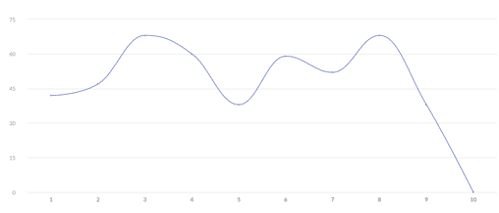
Our phrase is 28 characters long, so this leaves us some leeway in terms of title construction. For example, we can add there the brand name, creating a title according to the scheme:
Software development company – brandname.com
Let’s add it in the worksheet.

URL – it is a good practice to put a keyword in the URL.

H1 – again, we make sure this element contains the keyword in it.
Of course, Senuto comes to our rescue. In the SERP Results section (in SERP Analysis), we can check the H1s of our competitors. It is worth looking here for trends and solutions that stand out.
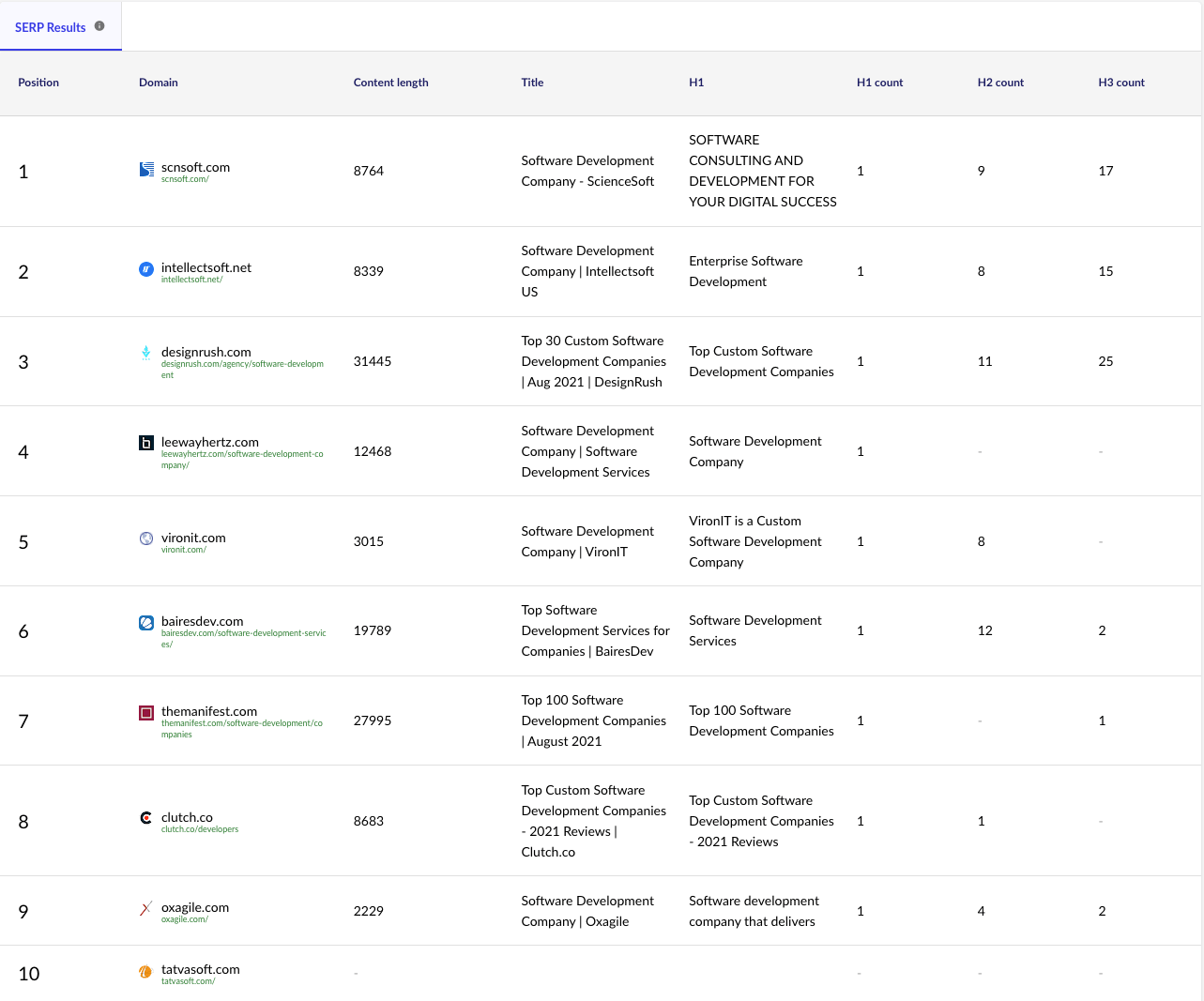
We place the selected title in the sheet.

H2-H6 – the number as well as the content of the following headings will be completed based on the information we obtained in SERP Analysis in Senuto.
We can analyze the H2 headings by looking at the chart below:

or use the quick summary:
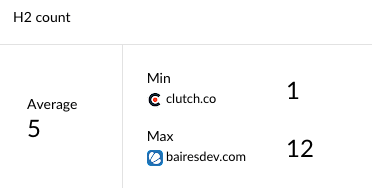
I noticed that in TOP 3 H2 occurs 9,8 and 11, respectively, in sites ranked 1st, 2nd and 3rd.
Therefore, I will bet on the value in between and recommend the creation of 10 headlines.
We proceed analogically in the case of H3.

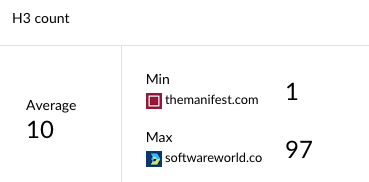
In the case of H3 on pages in the TOP 3 of search results, there are in turn 17,15 and 25 headings. This means that with 20 H3 headings, there will be 2 H3 headings per one H2 heading. Let’s make the appropriate changes in the worksheet.

All the data about H2 and H3 headers are also available below in the SERP Results section and it is worth using them.
What should the individual headings look like? In this case, I would recommend manually checking the results that Senuto provided to find the best headings from a potential user’s perspective.
Content length – here the matter is quite simple, as the data is provided by the first graph that appears in the SERP Analysis.

Additionally, we can count on an clean and simple summary:
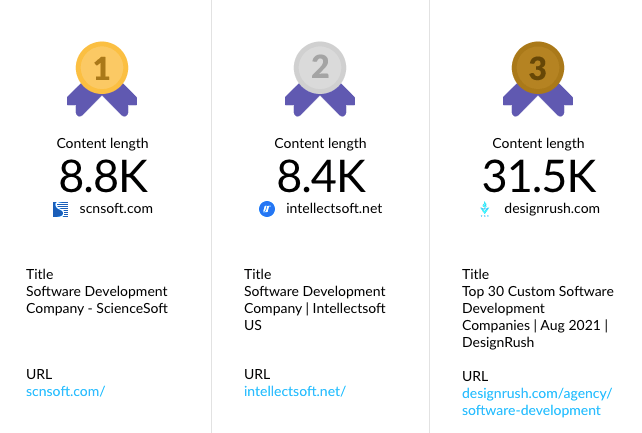
Based on the data, I would initially assume a length of 10,000 characters.
This value should go into the worksheet.

Paragraphs – one way to determine the appropriate number of paragraphs in the content, is to adjust to the number of H2 headings. Each of them could be responsible for a separate section in the article.

We were able to build a worksheet with the guidelines needed to write content focused on the most important keyword. This way we have the primary keyword out of the way. But what about secondary and supporting keywords? We do the same for them. The task now is to identify them. In this case we will use the data in the section Other Keyword Suggestions.
So we move smoothly to the Keyword Explorer tool
First, we focus on the phrases with the greatest potential. These will be our secondary keywords.
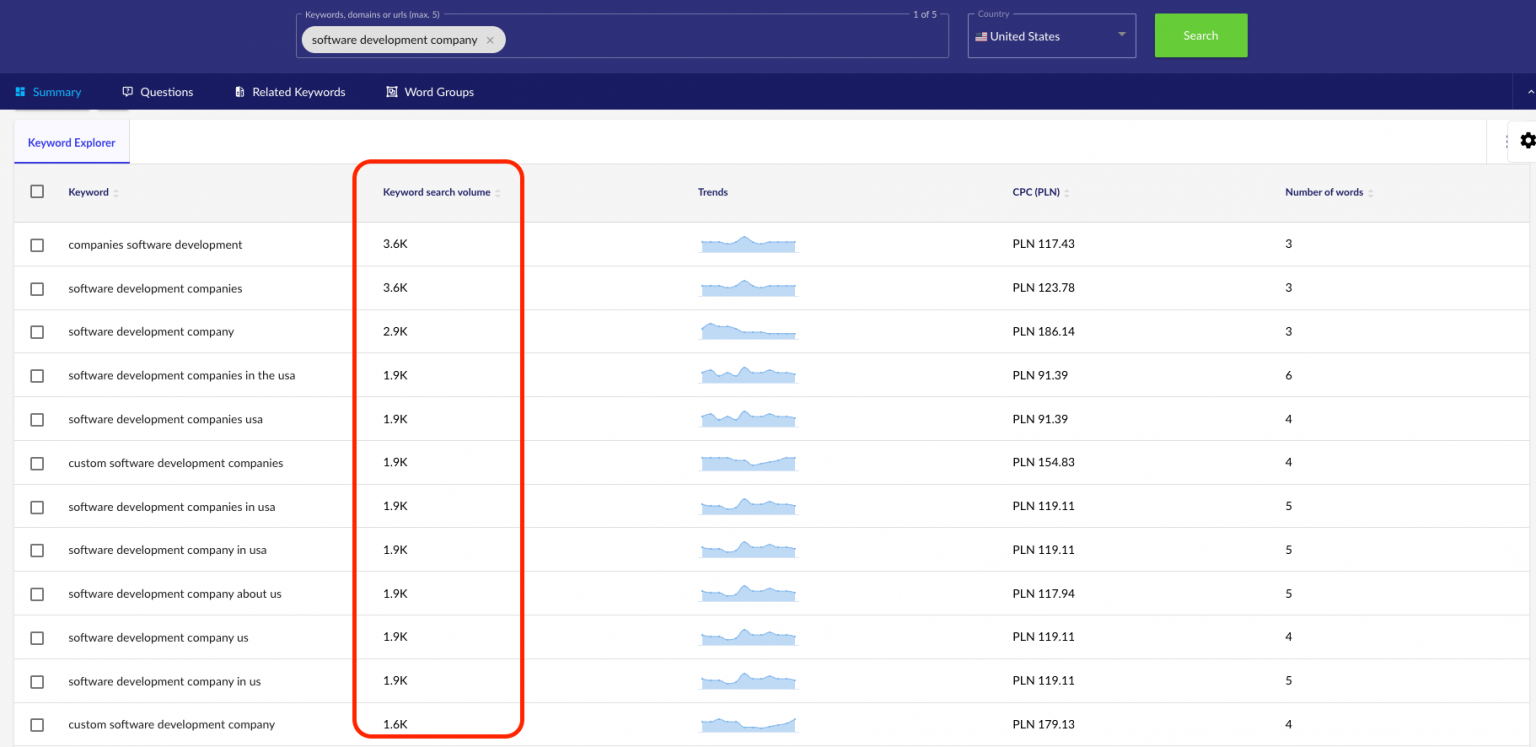
If necessary, we can of course check a given keyword in detail. The most important thing in our approach is to work all the time on related keywords.
We also have access to a very interesting Questions feature. This is an excellent source of ideas for supporting keywords.
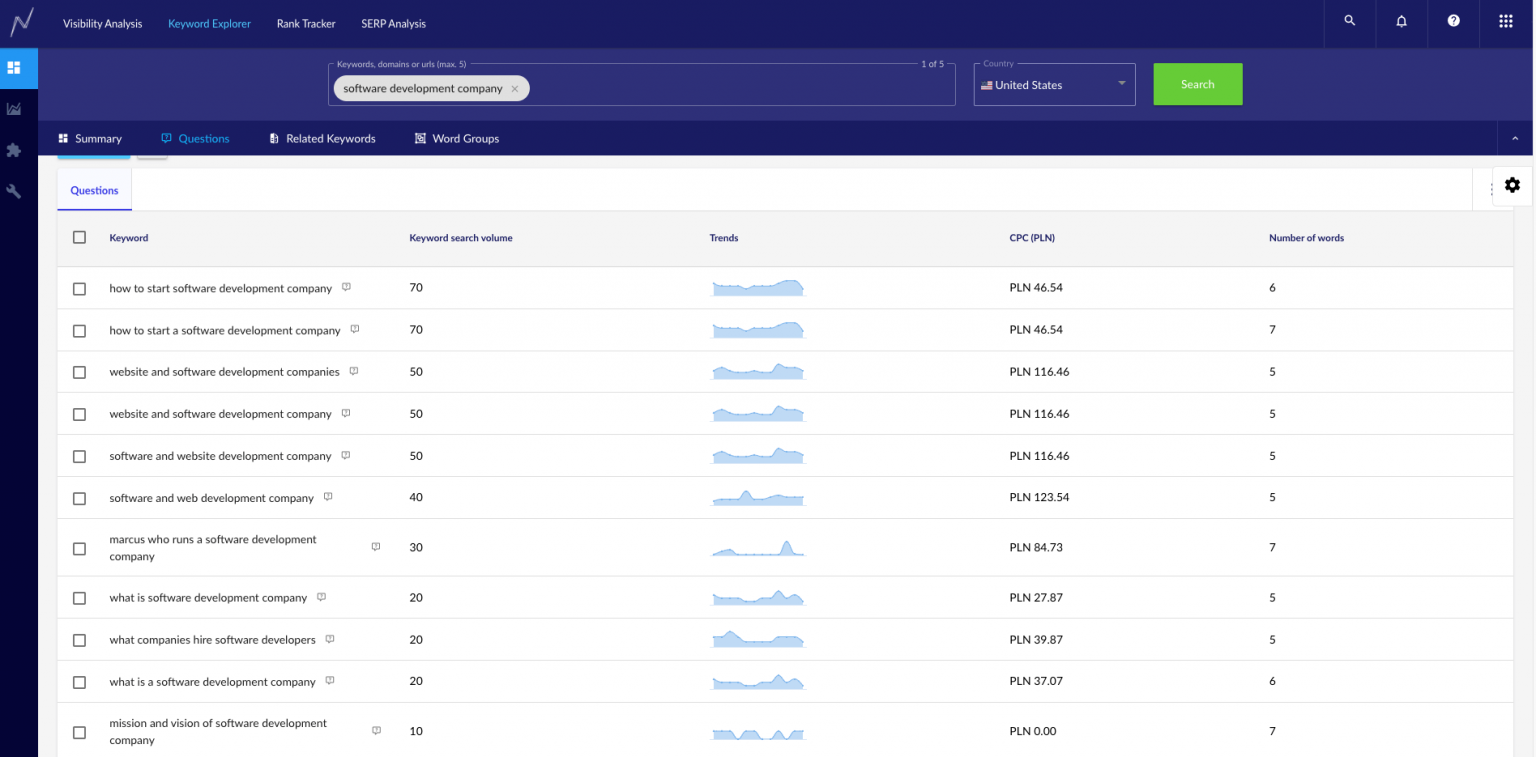
A feature that was even created to work on silos is the Word Group functionality.
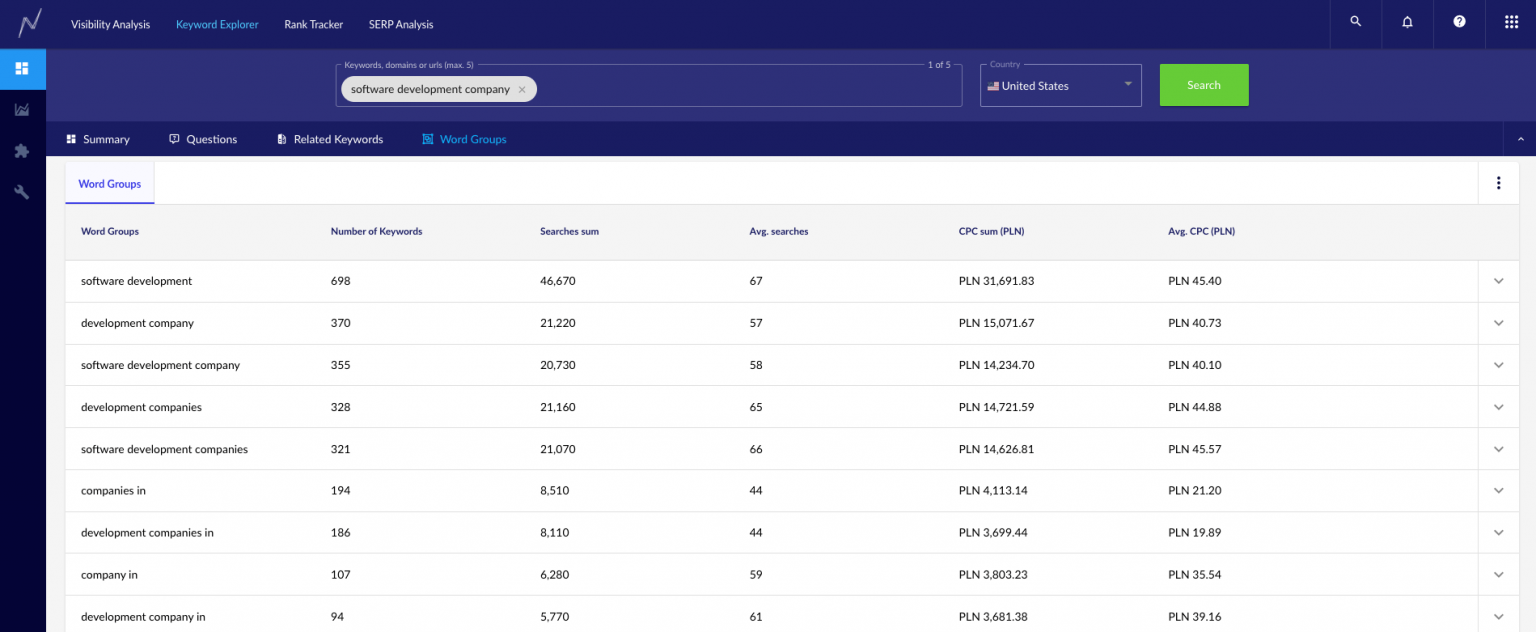
It allows us to easily track related keywords.
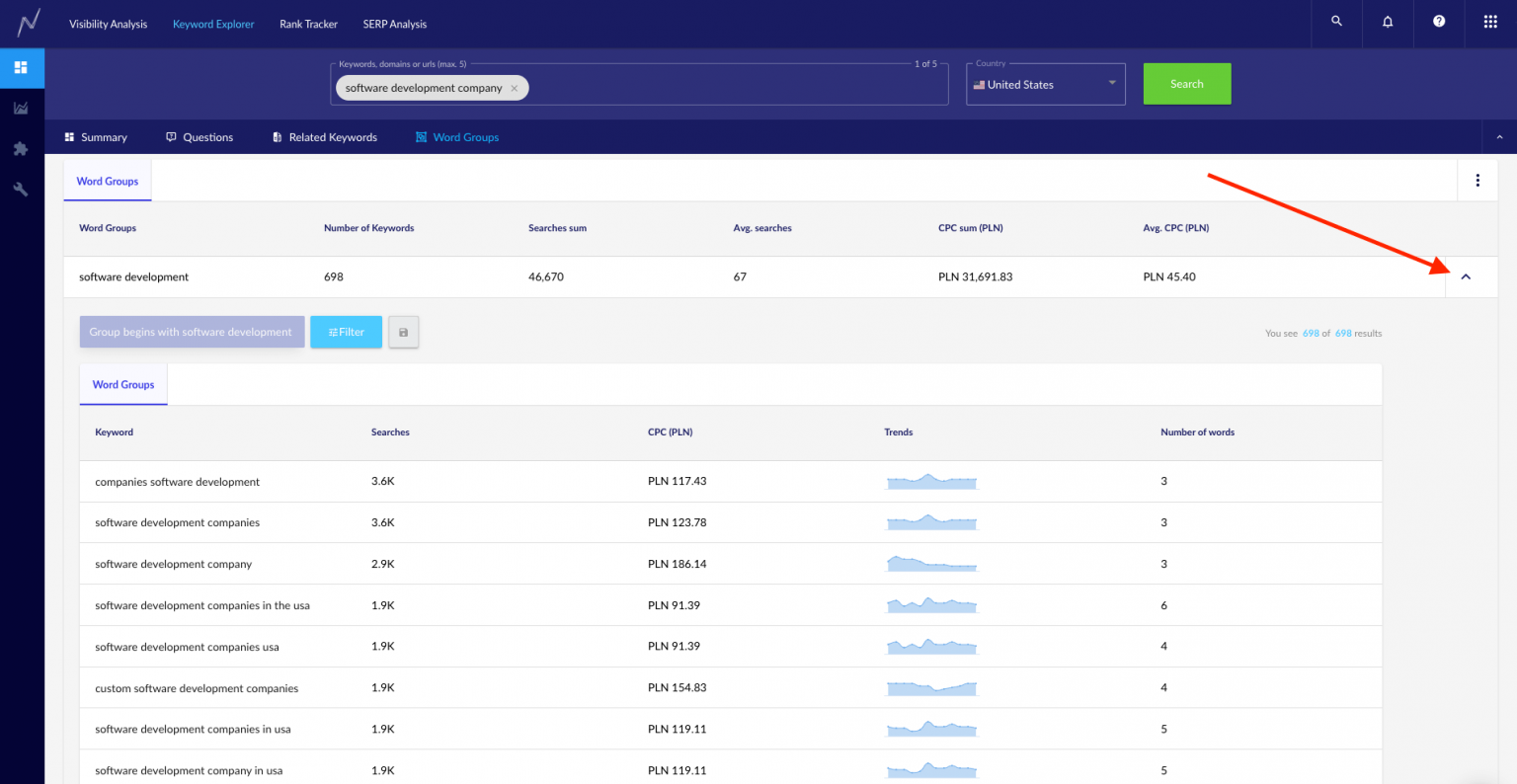
How do we use this data to build silos?
With the data from Keyword Explorer, we already know which keywords we can use to build our document.
The next steps are to fill in the information in the spreadsheet in a manner similar to what I discussed when working on the primary keyword. The result is all the content structure needed to create a silo and information for the copywriter.
Of course, it is important to remember that no tool can fully bail out an experienced SEO specialist (at least until AI gets even better) and it is necessary to properly interpret the data you get from the tool.
How many words should be added as primary keywords? My answer is – it depends. When analysing data from Senuto, a specialist should decide which and how many phrases to include as secondary keywords. There is no rule here which will say that let’s say 42 is the answer to all questions.
Summary
Work based on analysis and supported by the right tools is crucial to achieving success in search results. Using Senuto to build a content plan, helps provide valuable data that is essential in the process of creating any content strategy or other.
 Karol Kwiatkowski
Karol Kwiatkowski